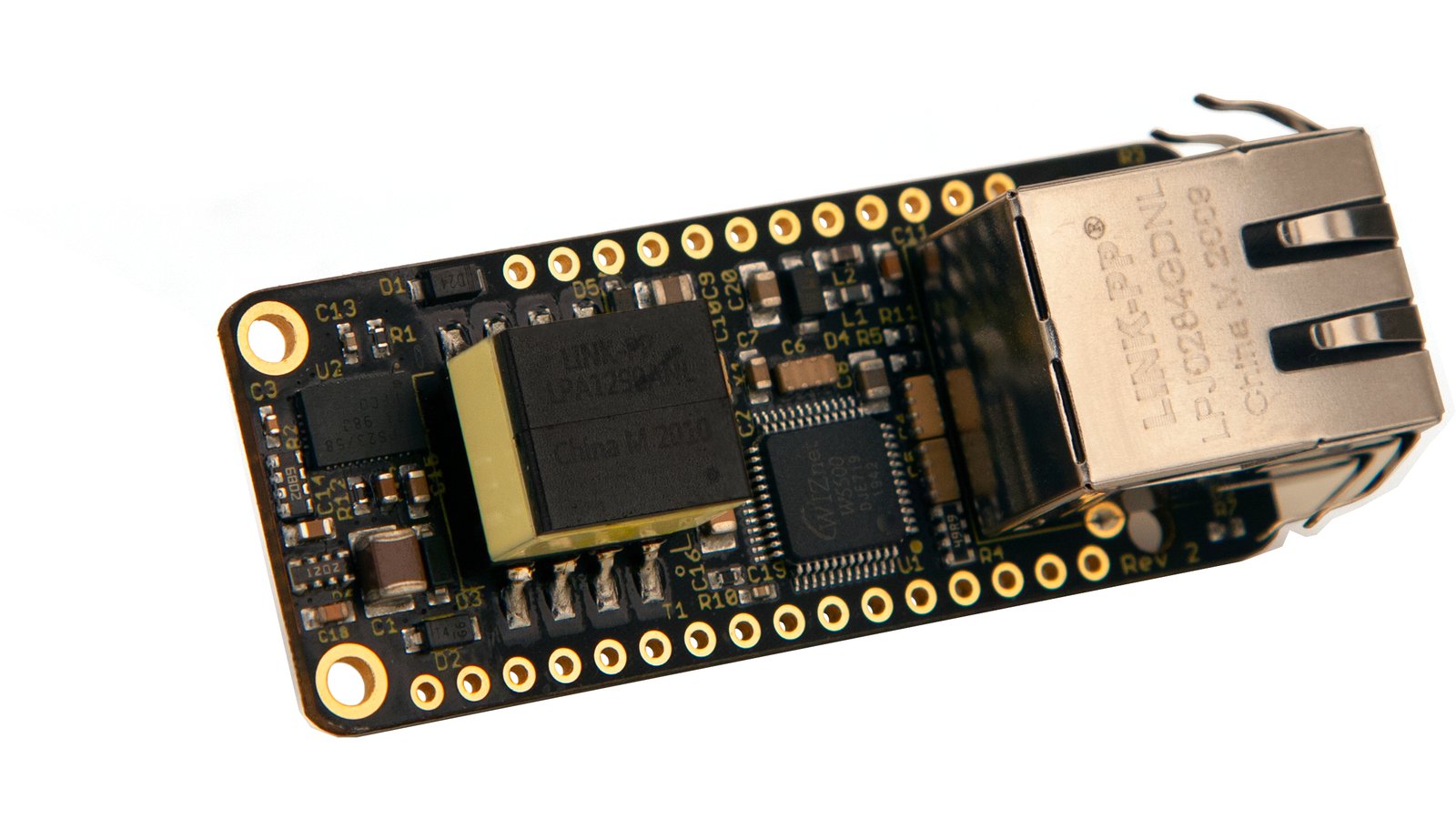Silicognition
Power Management
Feather
Silicognition
Power Management
Feather
Adafruit provides an Ethernet FeatherWing peripheral board for its popular Feather ecosystem of development boards—a valuable option for IoT and automation projects. But it has its limitations. The Feather still needs to be powered separately, and no built-in globally unique MAC address is provided for the user, making deployment hard.
What if we could fix these issues? What if there was a drop-in replacement that would not only provide Ethernet, but also power your Feather, and give you a globally unique MAC? And still be 100% compatible in size, connections and software support? Enter the PoE-FeatherWing!
Arduino and CircuitPython example code is available on GitHub. This code includes examples like Arduino "Web Client Repeating", which allows you to make repeated HTTP requests using DNS, as well as others.
| PoE FeatherWing | Adafruit Ethernet FeatherWing | wESP32 | |
|---|---|---|---|
| Manufacturer | Silicognition LLC | Adafruit Industries | Silicognition LLC |
| Ethernet system | WIZnet W5500 | WIZnet W5500 | LAN8720A + ESP32 |
| Ethernet throughput | ~13 Mbps | ~13 Mbps | ~90 Mbps |
| Ethernet MAC | Globally unique - provided by 24AA02E48 | Manually applied | Provided by ESP32 |
| PoE power | 4 W | 0 W | 13 W |
| Output voltage | 4~5 V | 0 V | 12 V or 5 V + 3.3 V |
| Form factor | FeatherWing | FeatherWing | Custom |
| PCB size | 55.9 x 22.9 mm | 55.9 x 22.9 mm | 75 x 40 mm |
| CPU | Flexible, off-board | Flexible, off-board | ESP32, on-board |
| Price | $29 | $19.95 | $55 |
Testing of the initial 100 units showed a few small things that could use improvement. Most users would never notice a difference in normal use, so we are offering 100 early bird boards at a discount price, and they will ship shortly after the campaign ends.
Here is an explanation of the small differences in the early bird boards:
Flyback transformer The first hand-built prototypes used a flyback from Hanrun, and performance was characterized with them. The 100 initial run units were built with supposedly equivalent transformers from Link-PP. Unfortunately, they’re not perfect equivalents. Turns out they have more parasitic inductance, which causes more ringing on the output, which in turn heats up the secondary diode more. So these samples have slightly lower output capability and likely higher EMI. Rev 3 production will be built with transformers from Hanrun.
Output regulation The goal is to have lower-than-5 V output so as to not interfere with USB when plugged in on the Feather. It’s a bit lower than it should be, if someone wants to use the lithium battery charging on their Feather.
| Rev 2 Units | Rev 3 Units | |
|---|---|---|
| Minimum voltage under load | 4 V | 4.3 V |
| Transformer | Link-PP with higher EMI | Hanrun with lower EMI |
| Max output power* | 3 W | 4 W |
*A USB-powered Feather only supports 2.5 W, so both 3 W and 4 W are just fine.
Project development logs can be found at the Hackaday.io project page.
See the ordering, paying, and shipping section of The Crowd Supply Guide for fulfillment details.
Clive Maxfield High-Tech Consulting
"Well, I for one am very impressed. It always amazes me when someone like Patrick looks at something like an Ethernet FeatherWing and says to themselves, “Hmm, not bad, but I can do better.”"
Produced by Silicognition in Longmont, Colorado.
Sold and shipped by Crowd Supply.

A FeatherWing that provides Ethernet, up to 4 W of power, and a globally unique MAC to your Feather. Headers are included, but not soldered.

Silicognition LLC is an electronic design services company that focuses on deeply embedded, IoT and low power systems.